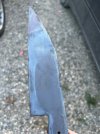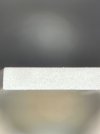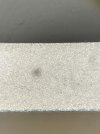- Joined
- Jun 11, 2006
- Messages
- 8,650
I broke the test blade I heat treated the other night. Measured 60-61rc after 2 tempers. There is a very thin decarb/oxide skin which is almost impossible to avoid with any type of gas shielding. This is why we grind spots onto our blades to hardness test. It gives us a unaform finish and gets us through the skin.
I’m doing 2 more tests with more abd less gas shielding to see if we can get different results. I did see some very shallow fishers which would of been removed when grinding the blade. Thy are dark so I’m almost thinking thy where there before the heat treat. Also a crack from heat treating shows up perpendicular to the edge or spine. These run parallel to the edge/spine which is the direction the steel was rolled in. So if there was an inconsistency in the steel surface it would be stretched out lengthwise just like this. But other than that the grain unde high magnification is fantastic.
I’m posting all of my results as I want people to know we have full transparency in trying to figure out what caused his blades to crack. Abd if it’s something we did then we want to know as it is our mission to provide the best knife heat treating on the market.
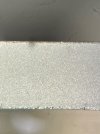
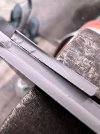
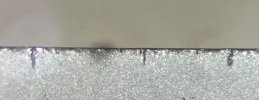
I’m doing 2 more tests with more abd less gas shielding to see if we can get different results. I did see some very shallow fishers which would of been removed when grinding the blade. Thy are dark so I’m almost thinking thy where there before the heat treat. Also a crack from heat treating shows up perpendicular to the edge or spine. These run parallel to the edge/spine which is the direction the steel was rolled in. So if there was an inconsistency in the steel surface it would be stretched out lengthwise just like this. But other than that the grain unde high magnification is fantastic.
I’m posting all of my results as I want people to know we have full transparency in trying to figure out what caused his blades to crack. Abd if it’s something we did then we want to know as it is our mission to provide the best knife heat treating on the market.




